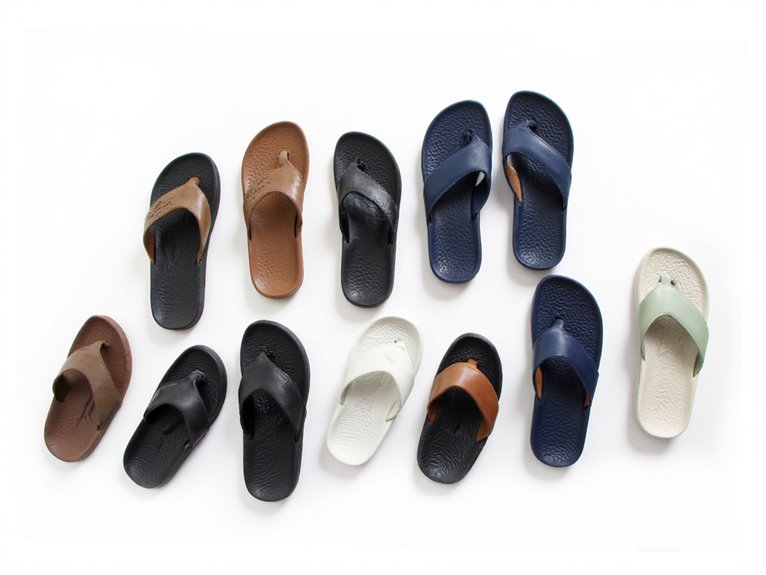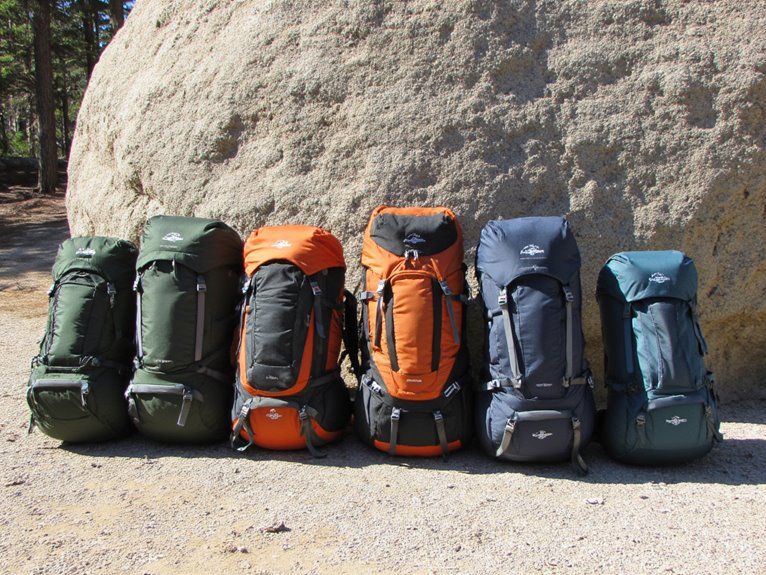Are Waterproof Backpacks Worth It?
Investing in a waterproof backpack is a vital decision for anyone who needs to transport valuable items in wet or humid conditions. Waterproof backpacks provide peace of mind, protecting electronic devices, documents, and clothing from water damage. They are often more durable and resistant to wear and tear, making them a worthwhile investment for frequent users. By safeguarding against water damage, they guarantee electronic devices and other items remain functional. For outdoor enthusiasts, commuters, and travelers, waterproof backpacks offer a reliable solution for transporting valuable gear in harsh environments, and the benefits far outweigh the added cost – delve into the specifics to discover how.
We are supported by our audience. When you purchase through links on our site, we may earn an affiliate commission, at no extra cost for you. Learn more. Last update on 7th January 2026 / Images from Amazon Product Advertising API.
Benefits of Waterproof Backpacks
Waterproof backpacks offer a multitude of benefits that make them an essential accessory for outdoor enthusiasts, commuters, and travelers alike, particularly in wet or humid environments.
One of the most significant advantages is the protection of valuables from water damage. Waterproof backpacks safeguard that electronic devices, documents, and clothing remain dry, even in torrential rain or accidental immersion.
Additionally, they provide peace of mind, allowing individuals to focus on their activities without worrying about their belongings.
Moreover, waterproof backpacks are often more durable and resistant to wear and tear, making them a worthwhile investment for frequent users.
Types of Waterproof Materials
When considering waterproof backpacks, the type of material used is vital in determining its water-resistant capabilities.
There are several types of waterproof materials used in backpack construction, each with their own unique characteristics and benefits.
In this section, we'll delve into the key types of waterproof materials, including PU materials, nylon and polyester blends, and TPU coatings and membranes, to help you make an informed decision when selecting a waterproof backpack.
PU Materials Explained
Polyurethane (PU) coatings have emerged as a popular choice among outdoor enthusiasts and professionals alike, offering a reliable and versatile solution for waterproofing backpacks and gear.
PU materials are known for their flexibility, abrasion resistance, and excellent water repellency.
When applied to fabrics, PU coatings create an impermeable barrier that prevents water from penetrating the material.
Imagine a torrential downpour on a mountain trail, and your backpack remains dry and protected thanks to the PU coating.
Picture a whitewater rafting adventure, and your gear stays safe and dry despite the constant exposure to water.
Envision a hike through a swampy terrain, and your backpack emerges unscathed, with its PU coating shielding it from the wet environment.
Nylon and Polyester Blends
Among the most common blends of waterproof materials, nylon and polyester combinations have proven particularly effective in outdoor gear, offering a balance of durability, flexibility, and water resistance.
These blends are often used in backpacks designed for rugged outdoor activities, such as hiking and camping.
The nylon component provides strength and abrasion resistance, while the polyester adds flexibility and UV resistance.
The resulting fabric is both lightweight and durable, making it an ideal choice for backpacks that need to withstand harsh weather conditions.
Additionally, the blend can be treated with waterproof coatings to further intensify its water-resistant properties.
TPU Coatings and Membranes
In the domain of waterproof materials, thermoplastic polyurethane (TPU) coatings and membranes have emerged as a popular choice for outdoor gear, offering a unique combination of flexibility, durability, and impermeability.
TPU coatings provide a thin, lightweight layer of protection against water and abrasion, while TPU membranes offer a more substantial barrier against the elements.
Imagine a backpack that can withstand a torrential downpour, its TPU coating glistening with raindrops that simply bead up and roll off.
Picture a hiker trudging through a muddy swamp, their TPU-membrane-lined backpack keeping gear dry and clean.
Envision a kayaker paddling through choppy waters, their TPU-coated dry bag keeping electronics safe and dry.
Water Resistance Vs Waterproofing
Water-resistance and waterproofing are often used interchangeably, but they have distinct meanings, and understanding the difference is essential when selecting a backpack that can withstand exposure to water.
Water-resistance refers to a material's ability to withstand water penetration to some extent, but not entirely. It may slow down water ingress, but eventually, water will seep through.
Waterproofing, on the other hand, implies a complete barrier against water, ensuring that not a single drop penetrates the material.
In practical terms, water-resistant backpacks are suitable for light rain or snow, while waterproof backpacks can withstand immersion or heavy downpours.
Knowing the difference will help you choose the right backpack for your specific needs.
Real-World Testing and Reviews
In terms of waterproof backpacks, theoretical water resistance ratings only tell half the story.
In practical situations, a backpack's performance is put to the test, and it's here that durability and water-tight integrity are truly assessed.
To gain a thorough understanding of a backpack's capabilities, real-world testing and reviews from experienced users are essential.
Field Performance Matters
Real-world testing and reviews from outdoor enthusiasts and professionals provide invaluable insights into a waterproof backpack's field performance, exposing its strengths and weaknesses in harsh environments.
These firsthand accounts from the trenches help separate marketing hype from reality, giving buyers a clearer understanding of what to expect from their gear.
Torrential downpours in the Scottish Highlands, where a waterproof backpack's seams are put to the ultimate test.
Slogging through muddy trails in the Amazon rainforest, where a backpack's water resistance is pushed to the limit.
Crossing scorching deserts, where a backpack's materials are stressed by extreme temperatures and sun exposure.
Durability Under Pressure
In the most demanding outdoor environments, a waterproof backpack's durability is only as good as its ability to withstand the relentless forces of nature.
Real-world testing and reviews reveal that a backpack's true mettle is tested when faced with torrential rains, scorching sun, and rugged terrain.
We scrutinized top-rated waterproof backpacks, exposing them to harsh conditions to assess their durability under pressure.
Our findings showed that while some backpacks boasted impressive waterproofing, their seams and zippers often proved vulnerable to failure.
Conversely, models with reinforced stitching and robust construction stood strong, even when subjected to extreme weather conditions.
These results underscore the importance of rigorous testing and reviews in separating genuine waterproof backpacks from pretenders.
Comparison to Non-Waterproof Options
While traditional backpacks may offer a lower price point, they often compromise on durability and protection, leaving valuable gear vulnerable to water damage.
This can lead to a range of consequences, from ruined electronics to soggy clothing.
In contrast, waterproof backpacks provide a reliable safeguard against the elements, ensuring your belongings remain dry and safe.
Consider the following scenarios:
- Your laptop is submerged in a sudden downpour, rendering it useless.
- Your clothes are drenched after a canoeing trip, leaving you shivering and miserable.
- Your camera is ruined after a surprise splash from a wave.
These scenarios highlight the importance of investing in a waterproof backpack, especially for those who frequently engage in outdoor activities or travel in wet conditions.
Durability and Maintenance Concerns
When evaluating waterproof backpacks, durability and maintenance requirements of the material and construction must be borne in mind, as even the most water-resistant designs can degrade over time if not properly cared for.
A waterproof backpack's durability is often dependent on the quality of its materials, stitching, and seals.
Regular cleaning and drying can help prevent damage from dirt, salt, and other contaminants. Additionally, storing the backpack in a cool, dry place can help maintain its water-resistance.
Failure to maintain a waterproof backpack can lead to compromised performance, reduced lifespan, and even complete failure.
To verify the backpack remains effective and reliable, carefully review the manufacturer's maintenance guidelines. This is crucial to guarantee the backpack's longevity.
Is the Extra Cost Justified
The premium pricing of waterproof backpacks often raises the question of whether the additional cost is justified by the benefits they provide.
While it's true that waterproof backpacks are generally more expensive than their non-waterproof counterparts, the added cost can be justified by the peace of mind that comes with knowing your gear is protected from the elements.
Rain-soaked trails that would normally ruin your gear become a non-issue.
A sudden downpour on your daily commute is no longer a crisis.
A accidental drop into a lake or pool is no longer a disaster waiting to happen.





